- Home
- Patrick Robinson
The Delta Solution Page 37
The Delta Solution Read online
Page 37
“Can’t risk prisoners, bro,” said the boss. “They booby-trapped their last ship, and they might have done the same to this one too.”
“Dead men can’t press detonators, right, sir?” said Josh.
“You got it, kid. In our business you don’t have time to fuck about.”
A short ripple of suppressed laughter ran through the SEAL ranks as they moved aft down each side of the ship. None of them knew there were seven pirates left or that the two leaders and the veteran combat trooper Ibrahim Yacin were dead.
Down below Omar Ali Farah and his buddy Abadula Sofian had been detailed to hold the corridor running inside down the starboard side of the main deck. They’d heard the roar of the arriving helos but had not dared go outside, and they’d heard the blast of the rockets on the bridge and not dared even to look.
But now the silence of the SEALs unnerved them even more. The sound of the rotors had gone and the intercom was dead. There was no reply from Wolde’s cell phone, and they debated throwing down their rifles and surrendering to whoever the hell had come on board.
They could smell smoke wafting through the air-conditioning system, and they decided to get out from the stifling corridor into the fresh air, where they would have the chance to jump overboard and make it back to the Desert Shark.
They pushed open the double doors and there was an immediate bellow of “HOLD IT RIGHT THERE, PAL! AND DROP YOUR FUCKING RIFLE RIGHT WHERE YOU ARE.”
Omar Ali and Abadula had not a clue about military precision, and Omar swung around to see who was yelling. But he had failed to drop his rifle, and in a split second it was pointing directly at Mack Bedford and Lieutenant Malone.
Mack and Josh’s rifles spat fire and two of the youngest pirates were each hit eight times, crumpling dead to the floor. The SEALs never broke stride.
CHAPTER 13
ON CAME THE SEALS IN A FORMIDABLE HALF CROUCH, HALF run through the decks of the Ocean Princess. They were watched by one terrified junior pirate who had been sent up from the dining hall to reconnoiter the ship and try to find out who precisely was there.
But the kid was only eighteen, and he was too afraid to hang around when he saw the seemingly giant Americans advancing in menacing formation. He simply fled back to his boss, Kifle Zenawi, who was in command of the entire complement of passengers in the dining room. The boy was so frightened, he could only report, “They comin’, boss. They . . . they . . . they’re most certainly comin’. Yessir. They comin’ alright.”
Zenawi’s worst fears were crowding in on him. He stared at the kid, and he gazed around the room at his prisoners. He too had heard the muffled explosions high on the bridge, and he knew that every line of communication he had was down. In addition to the two kids, he knew Abdul Mesfin was still alive, but he had the gravest doubts about the rest. It was possible that Wolde was as dead as his cell phone.
Kifle’s instincts told him to surrender to whomever was in charge. But that was as scary as death. What if the military force was Russian and they took the remaining Somali Marines prisoner and transported them back to Moscow, like those other guys from Puntland? That could mean a lifetime incarcerated in the Lubyanka or somewhere worse. Out of the question. Kifle and his men would fight to the death because there was still a chance they could make it back to the Desert Shark and make a getaway. The chances of completing the mission and raising a ransom from the ship’s owners were somewhere between remote and out of the question.
Abdul Mesfin, on roving guard duty, knew something really bad had happened, but he was uncertain precisely what it was. Hamdan Ougoure, manning the second heavy machine gun just above deck level portside, was completely in the dark. From his vantage point he could not see the advancing SEALs led by Chief Sharp.
But he heard them and, using his best judgment, opened fire before he saw them, hoping to frighten them to death. The bullets hit nothing worthwhile, but they prompted Cody to send Barney Wilkes around to the starboard blind side to take the hapless gunner Ougoure from the rear.
Barney shot him dead with two bullets to the head. Hamdan died slumped over his heavy Kalashnikov, the long ammunition belt dangling around his neck.
“That got the easy part done,” said Mack Bedford. “Now let’s drop down a deck and take control of the ship.”
But just then, Chief Charlton came skidding around the corner, yelling, “Sir, sir, the fucking bridge is on fire! . . . Really burning . . . we need to get it out!”
“Take four guys and find the crew,” snapped the commander. “There are 140 of them somewhere. Then send ’em up there with the firefighting gear.”
The speed with which Brad Charlton charged back down the companionway demonstrated just how concerned he was about the fire on the bridge. And Abdul Mesfin’s half-crazed dash for freedom, straight for the starboard rail and over the side, showed much the same state of mind.
If he’d dumped his rifle and charged for the ocean, he might have made it. But when an enemy’s running hard down a corridor, directly at an advancing SEAL assault squad, with his rifle in firing position, that’s suicide. With coldhearted certainty, Shane Cannell shot him dead.
Kifle Zenawi, flanked by two teenaged rookies, knew the ball was in his court. Before him were close to two hundred prisoners, unarmed but growing angry. The last of the pirates understood they were on their own and that a trained military force was aboard, a force that would not hesitate to gun down the three of them.
He had no appetite for this fight, but he desperately wanted to avoid being taken prisoner. He’d heard the short bursts of gunfire, the last from the starboard side of the ship. He signalled to the two kids to follow him out of the door and up the wide staircase to the portside throughway.
They made it to the outside deck and found themselves about twenty yards behind the SEAL team led by Chief Sharp.
“JUMP!” yelled Kifle,“JUMP OVERBOARD!”
Everyone heard him and, as the SEALs spun around, the three Somali Marines cleared the rails and hurled themselves into the ocean thirty feet below.
“HOLD YOUR FIRE!” shouted Chief Sharp. “WE’RE NOT SHOOTING FISH IN A GODDAMNED BARREL! . . . Two of those guys looked like they shoulda been in school.”
Thus ended the siege of the Ocean Princess. Brad Charlton raised the firefighting team, and it took about an hour to bring the blaze on the bridge under control, by which time the Chafee was alongside. A special team from the American warship was dispatched to take charge of the cruise liner since she no longer had a captain.
Her engines, propulsion systems, generators, and electronics were intact, but there was no way to control her since the steering and acceleration gear had been blown apart. The situation was, however, not as bad as it looked. Two of Chafee’s engineers masterminded a kind of jury-rigged steering, and three others fixed temporary speed controls.
She would head under escort with the Port Royal to Diego Garcia, from where the United States Air Force would fly the passengers back to Mombassa to await flights home.
Delta Platoon meanwhile was making a helicopter transfer back to the SEAL base aboard the Chafee. They had suffered no casualties, but they had several days more of this mission ahead of them.
Commander Bedford spoke on the phone to Andy Carlow and reported that no passengers had been injured and that he knew his parents were safe. So far as Mack could tell, Admiral Tom Carlow had more or less directed the entire operation from his closet.
Admiral Andy Carlow confirmed the procedures the navy would follow over the next few days. A press release would be issued stating only that a pirate attack on a US cruise liner in the Maldives had failed. Nothing more. No details of the SEAL attack.
Commander Bedford was to proceed with the mission as agreed by Mark Bradfield and General Lancaster. The commanding officer of the USS Chafee was under orders to transport Delta Platoon to her next theater of operations. Any further supplies the team needed would be air-dropped from a Djibouti-based aircraft.
“Mack, how much equipment did you use?”
“Nothing much. Couple dozen rounds of ammunition. Cobra launched a coupla missiles. That’s all. Everything else was either unused or recovered, including the fast-rope gloves.”
“Great job, bro,” said the SEAL C-in-C. “Any of the pirates survive?”
“Coupla kids and some weird-looking black fucker. Crazy pricks jumped overboard.”
“You didn’t intimidate anyone, did you?” laughed the admiral. “You know, contrary to section 189, part 10, sections C, D, and M, paragraph 6,073?”
“Never,” joshed Mack. “Fuck that.”
“See you, bro,” said Andy as he hung up the phone.
WITH ALMOST ALL OF HIS MEN airlifted over to the Chafee, Commander Bedford was watching a luxury motor yacht, about seventy feet long, moving slowly in about a half mile off the stern of the Ocean Princess. And then, to his amazement, he saw the boat slow down and pick up the three swimmers, the pirates who had just jumped ship into the Indian Ocean.
“Who the hell are they?” he muttered to Cody, who was staring at the rescue through powerful SEAL binoculars.
“God knows,” replied the chief. “I got a coupla black guys hauling the two kids aboard and that weird-looking prick climbing in last, up a ladder.”
“Is that the goddamned pirate mother ship?” said Mack.
“I don’t know,” said Chief Sharp. “But there’s a couple of long, narrow skiffs towing off her aft end.”
“It has to be the pirate command ship—these guys are together.”
“Pirate command ship!” exclaimed Cody. “Steady, boss. That sonofabitch cost the fat end of ten million bucks. Anyone owned that, he sure wouldn’t need to be a pirate.”
“Could be a couple of merciful towel-head princes, right?” chuckled Mack.
“With a couple of native canoes hanging off the stern? But maybe they found ’em just floating around.”
“And maybe they didn’t,” said Mack. “Remember one thing, Cody. These bastards have stolen a couple of giant oil tankers plus this cruise liner in the last month. I’m guessing they stole that motor yacht and are about to make their getaway with the only survivors from their mission.”
“Well, we better find out, right? I believe our policy is to leave no trace of our activities.”
“Correct, chief. That’s our policy. Hop up that gangway and ask the captain to close in on them. We’ll board and find out exactly who they are.”
“Okay, boss. Be right back.”
Cody made his way up to the bridge and explained the problem to Chafee’s Captain Marks, who immediately turned the wheel hard to starboard and headed out toward the stationary Desert Shark.
First thing Mack saw was the Saudi flag flying off the stern. Then he saw the name. Someone handed him a bullhorn and he yelled for the master of the Desert Shark to identify his boat and its passengers, none of whom were visible.
Captain Hassan, who was in the wheelhouse, completely ignored the request, which was an unusual thing to do given that he had one of the most powerful warships in the world, armed with heavy navy guns and missiles, standing off about forty feet from his hull.
Mack yelled again. “DESERT SHARK! You are flying the flag of the Islamic kingdom of Saudi Arabia. This is a United Sates naval destroyer. We are your country’s principal ally. Please identify yourselves. There has been a fatal act of terrorism here, and you have taken on board three of the perpetrators. You must identify yourselves.”
Captain Hassan was terrified. He had no idea what to say to this American officer. Elijah was below with the three soaking-wet pirates who had escaped. Hassan was alone in the wheelhouse. He said nothing but began to turn his sleek and very fast craft away from the Chafee. He’d outrun it; that was the game.
“If you do not comply with my request,” bellowed Mack, “my men will board the Desert Shark and arrest all of you on suspicion of piracy on the high seas . . . in the name of the government of the United States of America.”
Hassan hit the throttle and rammed it open with such force that the Desert Shark almost lurched up on her rear end. But she flattened out and blasted clear of the US warship, making 30 knots plus, heading west, with the three pirates rolling around on the floor of the stateroom, trying to regain their balance.
“Jesus Christ!” shouted Mack. “Captain Marks, sink that ship! And stay well clear. She’s probably loaded with high explosives.”
Captain Marks ordered an antiship action. The Desert Shark was racing away so quickly they would need to make decisions fast—like gunfire or missile—and by warship standards the Shark was not much of a target.
The Chafee’s missile director called to the bridge: “Taking Desert Shark out with a SLAMMER”—navy-speak for Standoff Land Attack Missile Expanded Response. A Boeing Harpoon guided missile: an all-weather, over-the-horizon, sea-skimming, low-level, 570 miles per hour ship-killer with a five-hundred-pound-blast warhead, one of the destroyer’s many steel-cased angels of death.
The Desert Shark was ten minutes and six miles away on the horizon when the Harpoon launched, lancing out of the tube with a fiery blast and hurtling toward the fleeing Hassan. Within twenty-eight seconds it had switched on its seeker, swerved, and then smashed into the port quarter of the elegant white-hulled yacht.
Designed to knock over a full-sized enemy warship, it practically blew the stern off the Shark and reduced the rest of the vessel to burning matchwood. The explosion was, however, not in scale to the size of the boat, which was, as Mack Bedford had feared, packed with high explosives: hand grenades, RPGs, dynamite, and ammunition.
It was a spectacular display of pure combustion, flames and black smoke billowing three hundred feet in the air. One of the trailing skiffs did a passable imitation of the space shuttle as it blew skyward, 250 vertical feet, totally engulfed in flame.
A passerby would have assumed that someone had hit and sunk an aircraft carrier. And long after she had slipped beneath the waves, there were deep, muffled sounds of explosions, and great, oily bubbles broke on the surface. No luxurious motor yacht, in all of maritime history, ever went to the bottom with a greater roar of belching rage and protest.
The sailors watching from the deck of the Chafee, even from a six-mile distance, could not believe the volume of the explosion that signalled the end of the pirate ship.
If Hassan and Kifle were on their way to hell, they must surely have made a grand entrance.
The Ocean Princess mission had been a disaster for Haradheere. There were no survivors, not one pirate left to tell the tale. Everything they had brought with them was gone, their food and equipment had vanished, and there was no trace of the boat or the men who had sailed with her.
Mohammed Salat, worried out of his mind, still could not reach Wolde or Ahmed. The last message he received had been six hours earlier: “Somali pirates control the Ocean Princess. Speaking to owner Hyland shortly. Ten million asked and agreement expected. Ismael.”
At that point Salat had issued the secondary tranche of “Operation Princess” stocks, 10,000 more at $30, and there had been a buying stampede. The market had waited with immense patience for news that a ransom had been agreed upon.
But since then, the silence had been endless. Salat was in possession of several numbers: Ismael’s cell, Elmi’s cell, Captain Hassan’s cell, the fixed cell on board the Desert Shark. But all lines had been dead for two hours. And there was only one possible conclusion left. Somehow, his Somali Marines had been stopped in their tracks. Only death or capture could have prevented them from taking a call from pirate HQ, Haradheere, the garrison to which their personal fortunes were so irrevocably bound.
There was the slightest possibility that a band of pirates could receive ransom money and then flee across the ocean with ten sacks of one-hundred-dollar bills to live happily ever after.
But that was not the character of Wolde and his men. Most of the Somali Marines had left their entire families in Haradheere—w
ives, children, fathers, mothers, and other relatives. Even more importantly, the shipowners and insurers had not had time to pay a ransom. No, in Salat’s opinion something had gone catastrophically wrong. At 6:00 p.m. that evening, the Haradheere Stock Market crashed.
Salat’s despondency was infectious. He was being bombarded with questions by his investors. He’d been in the stock exchange for several hours, and in a twenty-minute period, the price of the bonds issued for Operation Princess had crashed from $30 to $4. Everyone was trying to bail out, to preserve some of their money, and there was a desperation about the investors who had gone in at $30.
Guards had already gone back to the garrison and returned with cash to pay off the bondholders. Even the pirates’ relatives were trying to get out. There were the local big hitters who’d gone in for 1,000 shares at the original $20, and they were getting out for between $4,000 and $6,000.
Out in the street, a throng of Africans was spreading over the entire town, and their mournful cry echoed in the morning air. It was at once a sound of loss, sadness, and an unmistakable expression of tribal melancholy . . . O-O-O-O-H-H CRY FOR THE SOMALI WARRIOR!! DEATH HAS TAKEN OUR HEROES . . . O-O-O-O-H WHOMBA!!
Deep in the garrison, Salat’s staff tried to make contact with the outside world, tuning the television to the satellites and searching out the twenty-four-hour news channels from the Western world. This was never easy, but now, even when they managed to get connected, there was no news of any mayhem in the Indian Ocean.
They even tried e-mailing their New York agent, Peter Kilimo, but there was no Internet connection. Salat tried a phone call to Najib Saleh in Yemen, but the arms dealer knew nothing, and Salat’s news about a possible disaster practically gave him palpitations since he might need to explain the disappearance of the Desert Shark to her Saudi owners.
Late in the afternoon, the first breach in the mystery appeared. American radio stations were announcing that a pirate attempt on a US cruise ship in the Indian Ocean, close to the Maldives, had failed. Nothing else. No details. The press release appeared to have emanated from the Pentagon, an organization that does not respond to questions from outsiders.

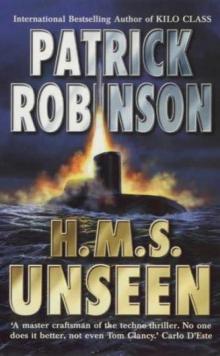 H.M.S. Unseen am-3
H.M.S. Unseen am-3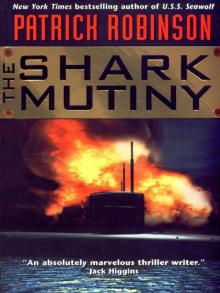 The Shark Mutiny (2001)
The Shark Mutiny (2001)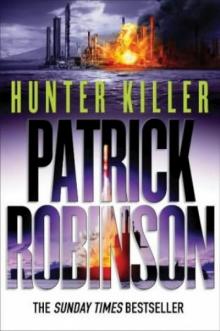 Hunter Killer am-8
Hunter Killer am-8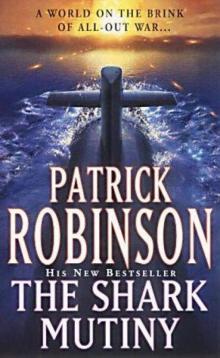 The Shark Mutiny am-5
The Shark Mutiny am-5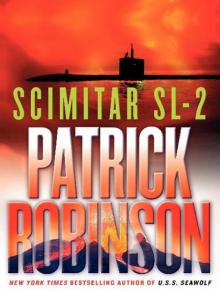 Scimitar SL-2
Scimitar SL-2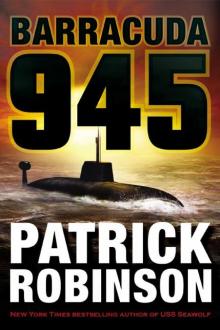 Barracuda 945 am-6
Barracuda 945 am-6 Hunter Killer
Hunter Killer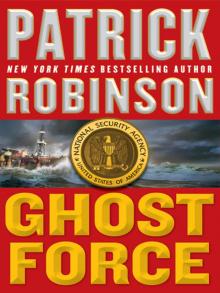 Ghost Force
Ghost Force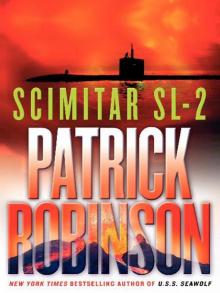 Scimitar SL-2 (2004)
Scimitar SL-2 (2004) Kilo Class am-2
Kilo Class am-2 The Lion of Sabray
The Lion of Sabray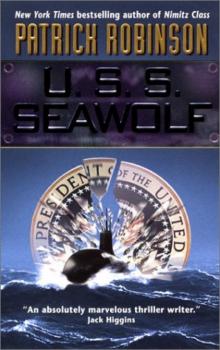 U.S.S. Seawolf am-4
U.S.S. Seawolf am-4 Ghost Force am-9
Ghost Force am-9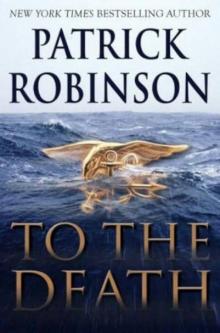 To the Death am-10
To the Death am-10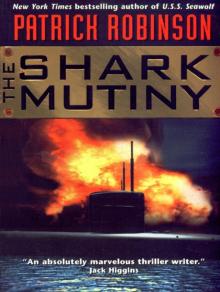 The Shark Mutiny
The Shark Mutiny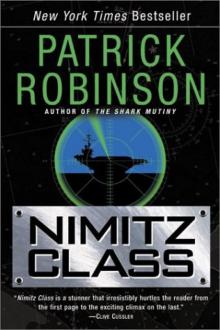 Nimitz Class am-1
Nimitz Class am-1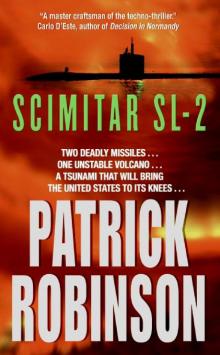 Scimitar SL-2 am-7
Scimitar SL-2 am-7 Barracuda 945
Barracuda 945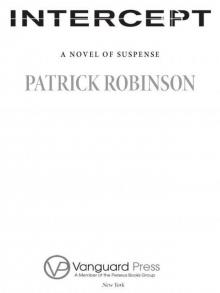 Intercept
Intercept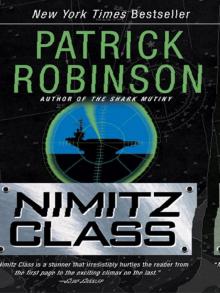 Nimitz Class (1997)
Nimitz Class (1997)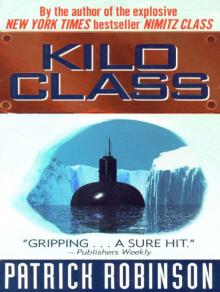 Kilo Class
Kilo Class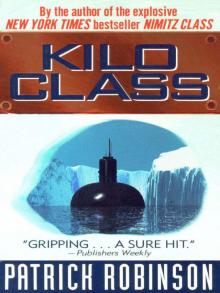 Kilo Class (1998)
Kilo Class (1998) Diamondhead
Diamondhead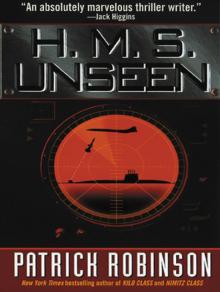 H.M.S. Unseen
H.M.S. Unseen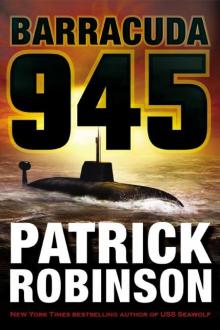 Barracuda 945 (2003)
Barracuda 945 (2003)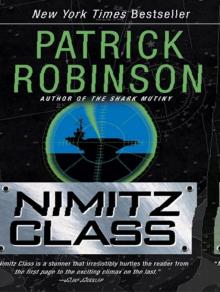 Nimitz Class
Nimitz Class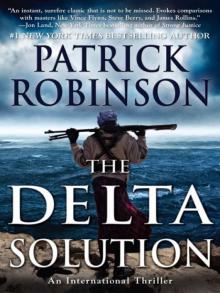 The Delta Solution
The Delta Solution U.S.S. Seawolf
U.S.S. Seawolf